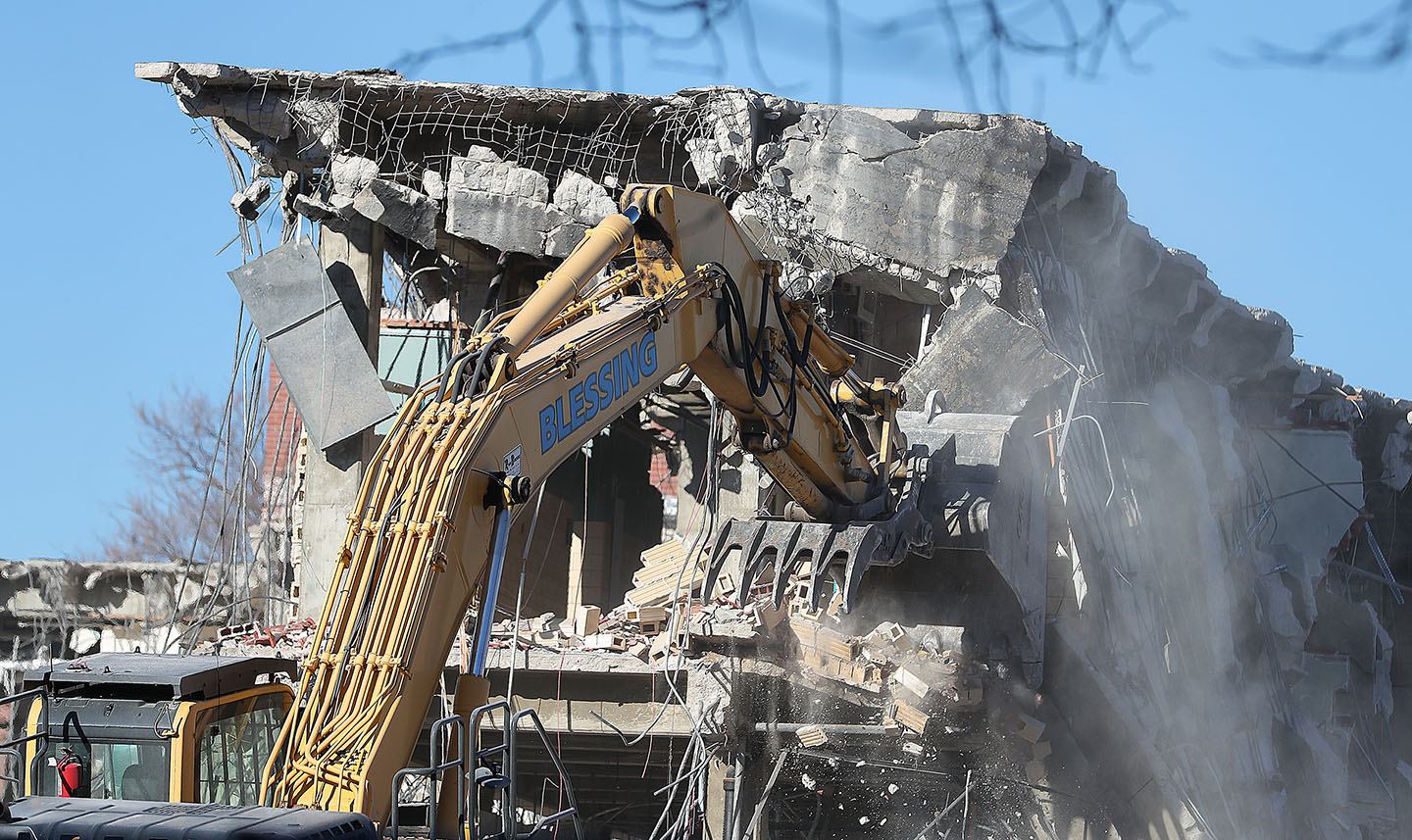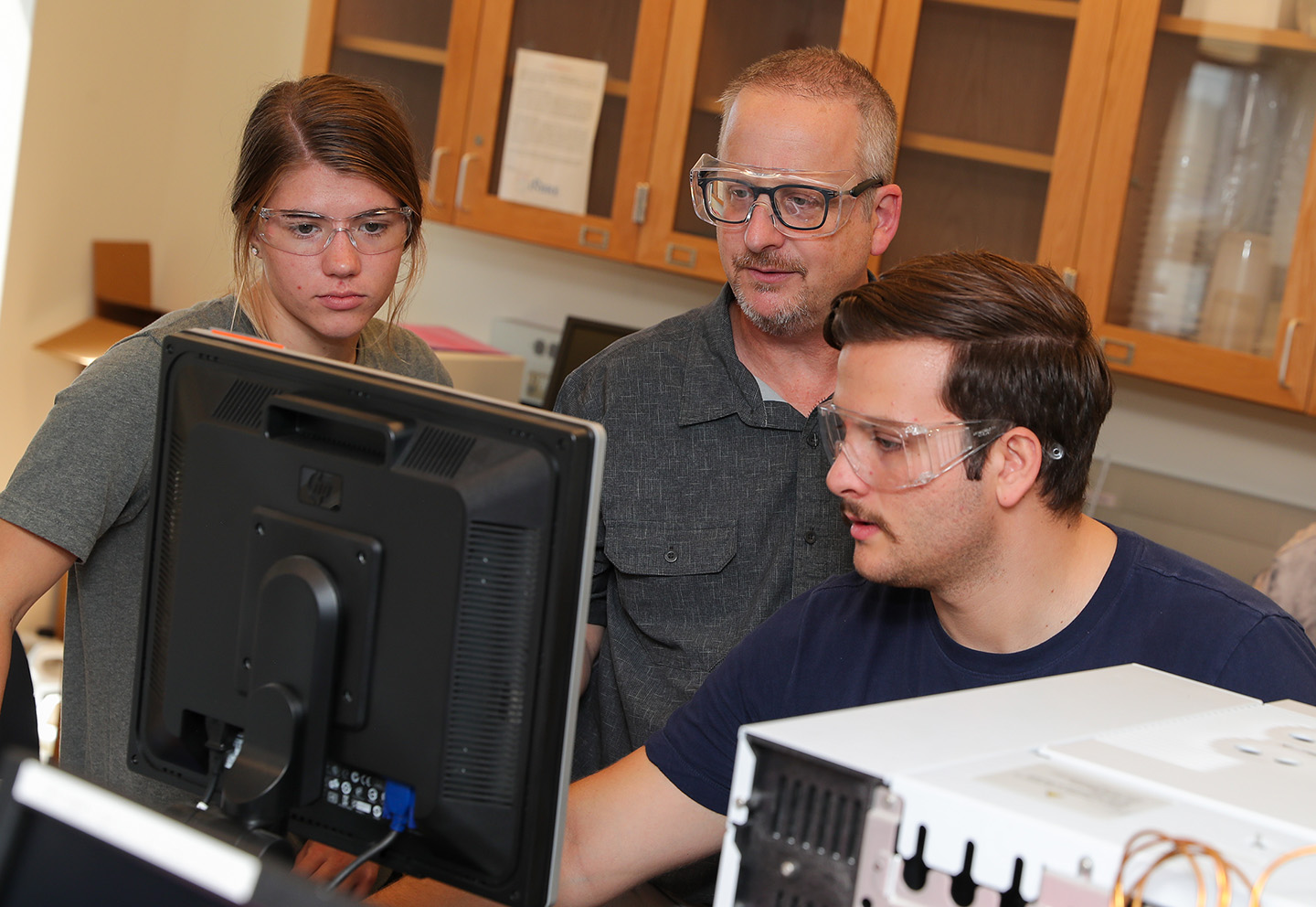
By TYLER ELLYSON
UNK Communications
KEARNEY – Concrete is one of the world’s most important resources.
Each year, billions of tons are produced to meet the growing demand for new buildings, bridges, roads and other infrastructure – making concrete the most used artificial material on the planet.
It’s a big business with a big environmental impact.
Concrete is made by mixing cement with sand, gravel and crushed stone. As global construction accelerates, so too does the need for these natural resources. The annual demand for these aggregates is estimated to be more than 1.8 billion tons in the U.S. alone.
Cement production is also a very energy-intensive process that generates approximately 8% of carbon emissions worldwide. For every ton of cement produced, a nearly equal amount of carbon dioxide, a greenhouse gas linked to global warming, is released into the atmosphere.
The demolition and disposal of concrete structures poses another problem. A huge volume of construction waste is generated every year, with concrete accounting for roughly 70% of this debris. Currently, only about 5% of waste concrete is recycled and reused.
“Manufacturing concrete has a huge carbon footprint, and there’s a lot of old concrete that just goes to waste. When buildings and highways are demolished, much of this ends up in landfills,” said Chris Exstrom, a chemistry professor at the University of Nebraska at Kearney.
Exstrom and his collaborators at the University of Nebraska-Lincoln recently received $805,000 in grant funding from the U.S. Department of Energy to address these issues. The research team, which includes professor Jiong Hu and assistant professor Seunghee Kim from the UNL Department of Civil and Environmental Engineering and professor Eric Thompson from the UNL Department of Economics, will study ways to improve recycled concrete while lowering carbon dioxide levels in the atmosphere.

One of the most promising ways to reuse waste concrete is to crush it and remove any contaminants, producing a material known as recycled concrete aggregate (RCA) that can be used as a replacement for gravel and natural crushed stone. This material is then mixed with cement to create recycled concrete.
The downside, according to Exstrom, is this recycled concrete is weaker than the original product made with natural aggregates. However, research has shown you can increase the strength and durability of recycled concrete through a process called carbonation.
“There are a couple of compounds in concrete – calcium hydroxide and calcium silicate hydrate – that can be reacted with carbon dioxide to form a compound called calcium carbonate, which improves the recycled concrete aggregate and makes it better for reuse in new concrete,” Exstrom explained.
Because concrete absorbs carbon dioxide, the gas is captured within the calcium carbonate and permanently stored there.
“That’s the carbon sequestration term that you often hear,” Exstrom said. “You’re literally locking it away in another substance so it doesn’t get back out into the atmosphere.”
Through their project, the University of Nebraska researchers will use specialized reactors to accelerate the carbonation process and identify the ideal pressure and carbon dioxide levels needed to modify recycled concrete aggregate.
“We’re going to try to find a step-by-step breakdown of how this is occurring, along with the optimum conditions for this process,” said Exstrom, a co-principal investigator on the project.
His role is to help determine the mechanisms by which recycled concrete aggregate reacts with carbon dioxide, as well as analyze concrete samples using X-ray diffraction, thermogravimetric analysis, infrared spectroscopy and scanning electron microscopy.
“This project could lead to developments where we can use more recycled concrete in new concrete manufacturing and help reduce the carbon footprint of the industry,” Exstrom said. “It’s one of several ways that we can help lower carbon dioxide levels in the atmosphere.”
The Department of Energy awarded $131 million to 33 research and development projects that advance the wide-scale deployment of carbon management technologies to reduce carbon dioxide pollution and help deliver on President Joe Biden’s goal of achieving net-zero greenhouse gas emissions by 2050. When combined with matching funds, the total award for the University of Nebraska project is just over $1 million over two years, with nearly $100,000 coming to UNK.
That money will support at least two undergraduate research positions, giving UNK students an opportunity to participate in a project that addresses a timely and meaningful climate challenge.
“I can’t stress enough the importance of including undergraduate students in this work,” Exstrom said. “Having this kind of experience makes chemistry applicable and more fun and really helps students prepare for what they will encounter beyond graduation. It connects students to real-world applications so they can incorporate the knowledge they’re gaining in the classroom and also gives them an opportunity to go above and beyond into some concepts that we don’t necessarily address in our classes.”
